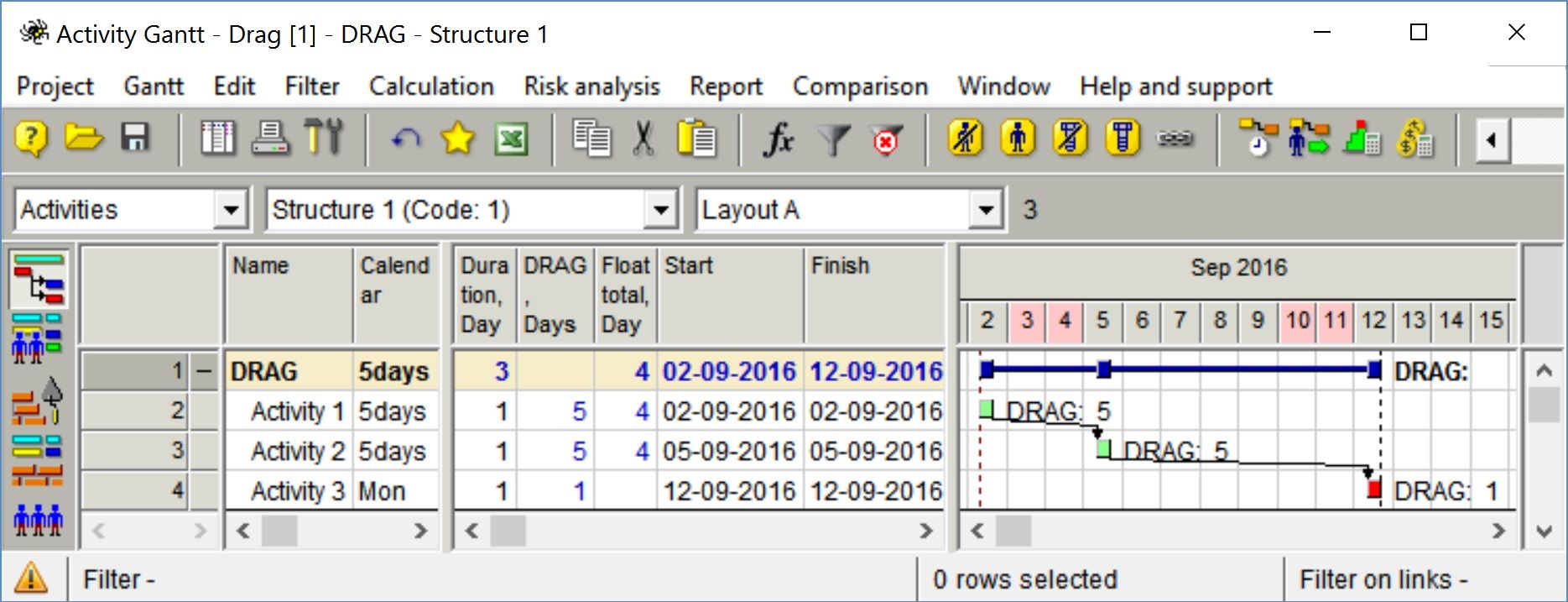*This post is almost entirely for Stephen Devaux's benefit*
I've just seen the draft of the release notes on our next release of Asta Powerproject (version 14.0.02, due out in October). It includes this paragraph:
Calculate the drag of critical tasks when rescheduling
You can now calculate the drag of critical tasks when rescheduling. Critical path drag (Devaux's Removed Activity Gauge) can be thought of as:
- The amount of time that a task or constraint on the critical path is adding to the total project duration.
- The maximum amount of time that the duration of a task can be shortened before the task is no longer on the critical path or before its duration becomes zero.
- A way of identifying the tasks that should be addressed first in an attempt to shorten the duration of a project - ie those with the greatest amount of drag.
To calculate the drag of critical tasks when rescheduling, select the Critical path drag check box, on either the Reschedule tab of the Options dialog or the Reschedule dialog:

You can display the drag of critical tasks in the spreadsheet, using a new Critical path drag field. Drag is also displayed in a new field on the Task tab of the Bar and Task Properties dialog and on the corresponding tab of the properties view. Tasks can also be filtered according to the amount of critical path drag.
I haven't seen the feature in person yet so my ability to answer further questions is limited to the text above! I'm sure once released we will be able to run webinar sessions demonstration the principle.
Ben @ Asta Powerproject
















Replies